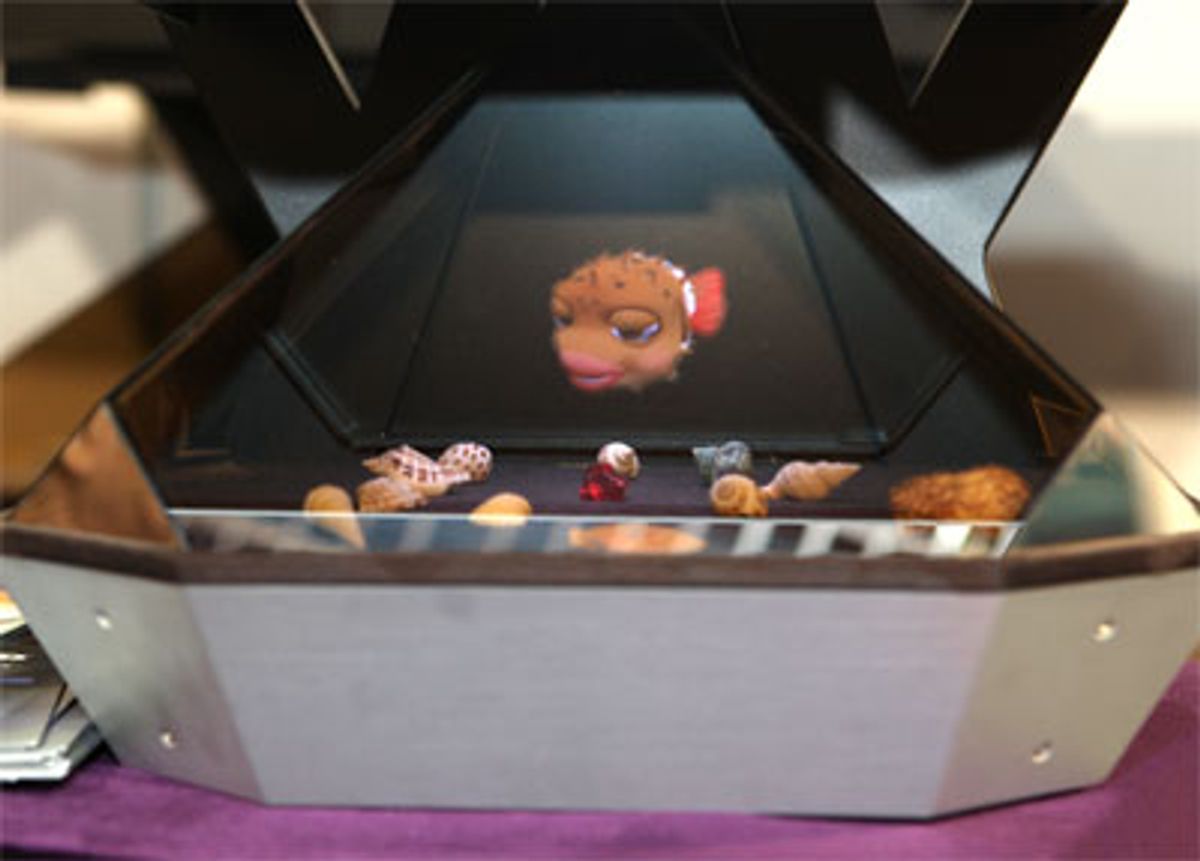At this year's Consumer Electronics Show, it was 3-D everywhere the eye could see--well, everywhere that two eyes could see. Many of the displays that we looked at use stereoscopic techniques, which present a different image to each eye to give the illusion of depth. Of course, when you only have one eye, or a standard video camera, the illusion vanishes; instead of bikini-clad beach-goers bursting out of the screen (a subject starring in an uncomfortable number of demonstration videos) your camera will capture only a blur.
But at least two companies at the show have created more camera-friendly 3-D displays. One reflects light from three glass plates and another uses lasers to create glowing plasma in air and water.
The Taiwanese company InnoVision presented their HoloAD display. The devices have slanted glass on three sides and an opaque straight backing on the fourth. A hood above these glass plates houses downward-facing 2-D displays. As viewers move 180 degrees around the device, they can see the overlapping images reflected on the glass. A manager at the company, who goes by the name Bear King, notes that the device is meant for advertising products, as the non-reflective side has a door to insert a real three-dimensional object. In one of his display models, an iPhone appears to project a 3-D globe. In another, a cartoon fish swims laps in a glass bowl.
SoongBae Dong in the research and development department at another, Japanese company, Burton Inc., says their product provides a "real" 3-D image--as the light viewers see is actually located in three dimensions. While some have imagined holographic displays that project light on mist or smoke, Burton's device, dubbed Aerial 3D, creates laser-induced plasma in precise locations in air or water to make an image. The display at the show used water as the medium, and created a pulsating blob, a rotating face, and a man walking. The product is not commercially available (and Dong has no estimates for a product's release) but the company's website hints that future applications could include a crossing signal for use over roads and a tsunami warning system. The images are currently monochromatic, but Dong says that multicolor displays are already in the works. One can only guess if plasma bikinis will follow.





